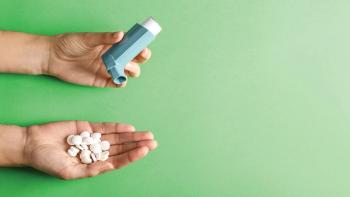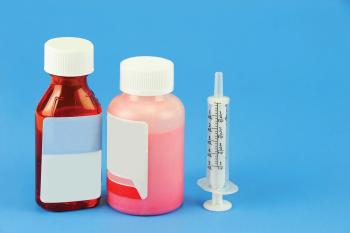
Pharmaceutical Technology Europe
- Pharmaceutical Technology Europe-08-01-2014
- Volume 26
- Issue 8
Advances in Prefilled Syringe Manufacturing
Experts discuss developments and future trends in prefilled syringes.
The use of prefilled syringes is growing, driven by the trend to self-administration and the growing markets for injectable drugs, particularly biopharmaceuticals. In the past 10 years, manufacturers and their material and equipment suppliers have made significant advances in quality, safety and efficiency in the manufacturing process. Pharmaceutical Technology Europe spoke with Claudia Petersen, global director for marketing and development in tubular glass syringes business development at Gerresheimer; Anil Kumar Busimi, head of global product management for the Syringe Business of Schott Pharmaceutical Packaging; Bernd Stauss, vice-president of pharmaceutical production and engineering at Vetter; and Christa Jansen-Otten, director of the prefilled syringe platform Europe for West Pharmaceutical Services about these developments and their views of future advances.
Pharmaceutical Technology Europe
Manufacturing developmentsPTE: What would you identify as the most significant advances in prefilled syringe manufacturing in the past 10 years?
Stauss (Vetter): First, new technologies, such as robotic systems, automated visual inspection machines and restricted access barrier systems (RABS)/isolator technology, have enabled an increase in manufacturing automation for high process and product safety. Another advance is the emergence of innovative new materials and syringe systems to enable more product-specific handling, such as polymer syringes, which promise to ease problems with API/syringe interactions, or presterilised syringes for ready-to-fill production.
Busimi (Schott): Advancements in glass production have led to better prefillable syringes over the past 10 years. Improvements in glass-forming processes allow for greater control of syringe barrel dimensions, a reduction in defects, and enhanced barrel strength. Developments in the syringe production process have addressed issues like tungsten residues and optimal siliconisation of syringe barrels through the creation of diving nozzle technology for better control of silicone-oil distribution. Automated systems for packaging syringes in nests, tubs and bags also further improved prefillable syringe quality. With the introduction of polymer prefillable syringes, pharmaceutical companies have a broader choice.
Petersen (Gerresheimer): Advances include enhanced vision-inspection systems for cosmetic and dimensional control of glass syringe bodies, improved needle assembly lines and better siliconisation technology using diving nozzles and state-of-the-art analytical equipment to determine the optimal siliconisation pattern. Glass-to-glass contact of syringe bodies has been nearly eliminated on modern glass-syringe forming and ready-to-fill processing lines. In addition, plastic prefillable syringes address specific needs.
Jansen-Otten (West): As the incidence of long-term diseases rises, drug-delivery devices and systems are becoming increasingly essential. Many of these treatments require regular injections, and a prefilled syringe system has become the container of choice for many therapies. The ability to combine a prefilled syringe system with a delivery device enables patients to self-inject and may aid in overall adherence to a prescribed therapy.
In addition, manufacturing of components based on quality-by-design principles promotes a product and manufacturing process that is designed to meet critical quality attributes, which leads to an understanding of the impact of materials attributes and process parameters during the development process. This method has helped to increase product quality and consistency.
Market and regulatory changesPTE: What market or regulatory changes or issues have affected or are expected to affect the use or design of prefilled syringes?
Petersen (Gerresheimer): The overall design of prefillable syringes has been standardised to allow the use of syringes from different suppliers on one filling line, therefore, we do not expect any major design changes in the coming years.
Stauss (Vetter): Patient safety and compliance and the trend toward self-administration in the home have been big drivers of prefilled syringes because they’re premeasured and easy to use. New regulatory requirements regarding product safety have also impacted prefilled syringe use and design, along with changed requirements for medical devices, such as the new FDA guideline for combination products. We believe that prefilled syringes will become a powerful product differentiator. They will likely become an integral part of product lifecycle planning in this continuously changing industry.
Busimi (Schott): Patient safety is the number one issue driving the prefilled syringe market and will be in the coming years. Pharmaceutical manufacturers of prefilled syringes continue to focus on drug stability, easy and safe drug administration, and ease of filling. The rise in biological drugs is challenging drug developers to find robust solutions, such as developing prefilled syringes with low extractables and leachables to avoid drug interactions. Increasing regulatory requirements for visible and subvisible particles, breakage, cosmetic defects and needle safety are also a top concern. Human factors studies also play a role in syringe development, influencing how manufacturers design and manufacture prefilled syringes to ensure ease of use.
Jansen-Otten (West): Most prefillable syringe systems are still based around conventional glass syringes, which may cause safety issues such as breakage. Newer drugs, including biologics that may have higher viscosity or require higher dosages, can present administration challenges. Delivery-system companies have introduced new materials for prefillable syringes, including break-resistant cyclic olefin polymers and safety accessories that allow for easy and safe injection. These systems are not only manufactured from a novel polymer that reduces the risks of breakage and allows flexibility of design, but also the dimensional tolerances, quality standards, and freedom from materials, such as silicone oil, tungsten or adhesives, help to ensure that the systems provide the combined benefits of plastic with the features necessary to contain a sensitive biopharmaceutical.
Future trendsPTE: Looking ahead, what do you see as potentially the most significant advances in the next five to 10 years?
Stauss (Vetter): Serialisation is clearly a must, because regulatory authorities around the globe have set deadlines for its implementation. Likewise, track and trace enables a safer, more secure and more efficient drug supply chain. Automation also will have to further increase to mitigate risk of contamination and meet ever-stringent regulatory requirements. When it comes to meeting the manufacturing needs of different products, the industry will have to become even more flexible. Using disposable technology, for example, may be appropriate for some products, while stainless steel suits others. Manufacturers need to balance speed, costs, business goals and other factors to determine the appropriate fit for each product. Quality is, and will continue to be, the most important element of our business. Therefore, it is necessary to further improve the quality of primary packaging materials, excipients and aseptic processes to meet final product specifications.
Jansen-Otten (West): There can be a cost benefit when transitioning healthcare delivery from the hospital environment to the home environment. Effective drug-delivery devices and systems that enable a patient to self-inject can aid this transition. Pharmaceutical and biotech companies are working closely with drug-delivery device manufacturers at an early stage to ensure that there is efficient development of an overall system to enable cost-effective drug delivery. Such partnerships help create a better understanding of the interactions among all elements of the drug-delivery systems (i.e., drug, containers, delivery device and patient), which can be a key factor in the success of the overall treatment regimen and patient adherence. Finally, new combination devices may enable better communication from patient to caregiver by providing data monitoring, once again helping to improve compliance.
Busimi (Schott): Future advancements in prefilled syringes will renew the focus on patient safety. Researchers aim to develop sophisticated drugs, so expect improved analytical tools for evaluating early-stage drug and container interactions, prefilled syringes with fewer components and less silicone and tungsten to eliminate potential drug container interactions, and further developments in large-volume prefilled syringes that could reduce medical errors in infusion therapy. Researchers will also focus on improving needle technology to reduce pain, strengthening glass to avoid breakage and enhancing the compatibility of prefilled syringes with various devices.
Petersen (Gerresheimer): Prefilled-syringe suppliers will have to continue to optimise their production process regarding the level of cosmetic defects. This can be achieved by changes to the manufacturing process itself, such as the avoidance of glass-to-glass contact and the use of advanced vision technology. Next to that, the growing biotechnology segment with its complex protein molecules will continue to push the development of syringes with a low amount of silicone particles or even silicone oil being substituted by other materials for lubrication. Another challenge being addressed is the metal oxides (e.g., tungsten oxides) generated from the metal pins in the syringe bore, which may be able to interact and degrade proteins. Syringe suppliers are either working on or already have low-tungsten syringes in their product portfolio. In addition, more products for home-care use means that ease-of-use requirements will be even more important. Syringe suppliers must further optimise for optimal functionality inside administration devices like auto-injectors.
Articles in this issue
over 11 years ago
Serialisation, Aggregation and Authenticationover 11 years ago
Single-Use Systems: Enabling the Future of Biologics Manufacturingover 11 years ago
Protecting Drug Safetyover 11 years ago
Trends in Single-Use Biomanufacturingover 11 years ago
Polymers for Solubility Enhancementover 11 years ago
Innovations and Future Trends in HPLC Column Technologyover 11 years ago
Advances in Film Coatingover 11 years ago
Biosimilar Development: 10 Years Onover 11 years ago
Supply-Chain Security of Pharmaceutical Starting MaterialsNewsletter
Get the essential updates shaping the future of pharma manufacturing and compliance—subscribe today to Pharmaceutical Technology and never miss a breakthrough.




